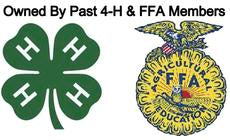|
USDA’s National Agricultural Statistics Service (NASS) is reaching out to beekeepers and farmers across the nation in December 2015 and January 2016 to gather information on the number and health of honey bee colonies, honey production and stocks, and the cost to farmers of pollination services, according to a recent news release from the agency.
The surveys will be used to develop baseline data and additional goal metrics for winter, summer, and total annual colony loss in support of the. Among its goals, the Strategy aims to reduce honey bee colony losses during winter to no more than 15% within 10 years.
“These new data will be crucial to measuring and understanding the current state of the pollinator industry in the United States,” said NASS Administrator Joseph Reilly. “Honey beekeepers are encouraged to participate in the surveys so that policy makers have a robust data source to make informed decisions and protect our struggling pollinators.”
Pollinators are critical to the nation’s economy, food security, and environmental health. Honey bee pollination alone adds more than $15 billion in value to agricultural crops each year, and helps ensure that our diets include ample fruits, nuts, and vegetables. This tremendously valuable service is provided to society by honey bees, native bees and other insect pollinators, birds, and bats. But pollinators are struggling. Last year, beekeepers reported losing about 40% of honey bee colonies, threatening the viability of their livelihoods and the essential pollination services their bees provide to agriculture.
Beekeepers should expect to receive two surveys from NASS. They will receive the existing Bee and Honey Inquiry, which surveys beekeepers about honey production, price, and stocks, but not colony health. NASS will continue to conduct that survey, the results of which are slated for release in March 2016, and which are archived at www.nass.usda.gov. Beekeepers will also receive a new survey from NASS, which the agency will use to publish state-level estimates on key topics, including number of colonies, colonies lost, colonies added, and colonies affected by certain stressors. The first results of these surveys will be published in May 2016.
In addition to surveys being sent to beekeepers, NASS will survey farmers about crops pollinated, number of colonies needed for pollination, and the cost for those colonies. NASS plans to publish results of those surveys in December 2016.
These surveys and corresponding data are part of the National Strategy to Promote the Health of Honey Bees and Other Pollinators, prepared by the Pollinator Health Task Force, which USDA co-chairs. The Strategy is a comprehensive plan to work across the Federal government and with partners to address the research, education and management challenges we must overcome to sustain healthy pollinator populations. One of the three overarching goals of the National Strategy is to reduce honey bee colony loss and to develop additional baseline data using the NASS data.
As is the case with all NASS surveys, information provided by respondents is confidential by law. NASS safeguards the privacy of all respondents, ensuring that no individual operation or producer can be identified, as required by federal law.
The NASS surveys are one part of a larger effort USDA is undertaking to promote the health of pollinators, including honeybees.





